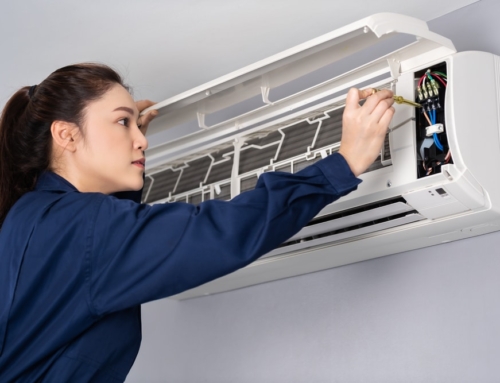Coronavirus relief: CARES Act 2020. How the $2 trillion coronavirus relief bill will help both families and businesses during the COVID-19 pandemic.
The number of Coronavirus/COVID-19 cases in the U.S. continues to spike as more tests become available and states improve reporting procedures. In our coverage of the Coronavirus, we’ve watched the cases skyrocket from 40 to over 400,000 and deaths climb from just 2 to nearly 15,000 in less than 30 days. The White House anticipates the Coronavirus will reach its peak in mid-April and could claim 82,000 lives by August, even with social distancing, based on the most recent models they’ve seen.
COVID-19 poses a huge threat to the lives of Americans, and yet, more than 40 percent of Americans are more concerned about their personal finances than they are about contracting the virus, according to a survey by the National Financial Educators Council. Roughly 60 percent of Americans say the Coronavirus has already had a negative impact on their finances. That makes sense since more than 10 million people lost their jobs since the middle of March, and millions more might, in what economists are predicting will be the worst recession since World War II, and perhaps ever.
Some relief is on the way as the U.S. government passed the Families First Coronavirus Response Act (FFCRA) and now the Coronavirus Aid, Relief, Economic Security Act (CARES), a $2 trillion economic relief plan with stimulus checks for certain qualifying citizens and a $350 billion program to help small business owners.
Coronavirus Relief: CARES Act 2020
The CARES Act has three primary goals:
- Individual Financial Relief
- Organizational Financial Relief
- Healthcare Funding and Operational Support
The CARES Act Provides Individual Financial Relief
The FFCRA made Coronavirus testing free for Americans and the CARES Act now requires all private insurance plans to cover COVID-19 treatments and vaccines.
The CARES Act provides funding for $1,200 tax rebates for individuals with an additional $500 for each qualifying child and extends the deadline for filing 2019 tax returns to July 15th. The checks start to phase out for individuals earning more than $75,000 a year and disappear for people making more than $99,000 or couples making more than $198,000 a year. Treasury Secretary Steven Mnuchin said the checks will be directly deposited into qualifying accounts within three weeks.
It temporarily suspends federal student loan payments and revises provisions related to campus-based aid, supplemental educational-opportunity grants, federal work-study, subsidized loans, pell grants and foreign institutions. All federal student loan and interest payments will be suspended through September 30th without any penalty to the borrower. Students who are forced to drop out because of the Coronavirus won’t have to pay back any grants or other aid they’ve already received.
The CARES Act also increases unemployment benefits and broadens eligibility to include gig workers and freelancers under the temporary Pandemic Unemployment Assistance Program.
Lastly, the CARES Act allows employers to provide $5,250 in tax-free student loan repayment benefits, which means an employer can assist with loan payments and employees wouldn’t have to include those payments as income.
The CARES Act Provides Organizational Relief
The CARES Act sets aside more than $500 billion to help businesses, providing funding for forgivable bridge loans and additional funding for grants and technical assistance. Part of that financial relief, $350 billion, will be allocated to small businesses through the Paycheck Protection Program.
“What’s really interesting about this program is that it isn’t just for companies that have employees but sole proprietors, independent contractors, gig economy workers and self-employed individuals are all eligible,” says Ilyce Glink, publisher of ThinkGlink.com and CEO of award-winning financial wellness technology company Best Money Moves.
“The way the Paycheck Protection Program is formulated is as a loan from the Small Business Administration (SBA), a 7a loan, and you apply for it through the disaster relief bill. The reason they’re leveraging the 7a program is it’s already existing. They already have the technology to push the applications to lenders, so like with all SBA loans, you don’t actually get it from the SBA. You get it from their network of lenders that do the processing, there’s a retail side and all of it is backed 100 percent by the SBA.”
Glink notes that the maximum amount that you can borrow for any single small business is 250 percent of their average monthly payroll expenses up to about $10 million. This amount is intended to cover eight weeks of payroll expenses and additional small amounts for other kinds of debt obligations or other expenses. “What’s interesting is that the amount that can be forgiven is equal to the sum of expenses for payroll, existing payments on mortgages, rents, leases, utility agreements, hourly wages and other kinds of costs for two months. So it allows you to borrow this money and then the federal government intends to forgive the loan or almost all of the loan, ” she added.
The CARES Act Provides Healthcare Funding and Operational Support
The CARES Act sets aside $100 billion for hospitals responding to the Coronavirus and $1.32 billion in additional funding for community centers that provide care for roughly 28 million people. It allows $11 billion in spending for Coronavirus diagnostics, treatments, vaccines and $80 million for the Food and Drug Administration (FDA) to prioritize approval of new drugs related to the Coronavirus. The Center for Disease Control (CDC) is getting $4.3 billion for their programs and COVID-19 response efforts. The CARES Act sets aside another $20 billion for veteran healthcare. The Strategic National Stockpile will receive $16 billion to increase the availability of equipment like masks and ventilators, boost hiring efforts and speed the development of a Coronavirus vaccine, treatments and faster diagnostics.
In addition to all of this, the CARES Act builds on funding food security programs giving $8.8 billion to allow schools to provide more meals to children, an additional $15.5 million to the Supplemental Nutrition Assistance Program (SNAP) and $450 million to fund food banks.
The CARES act fills in a lot of the gaps that FFCRA didn’t cover, but as robust as it is it still isn’t enough to counter the damage the Coronavirus has done. The U.S. government acknowledges this and Speaker Nancy Pelosi has said they’re already working on a new bill including increased protections and equipment for workers on the front lines of the coronavirus, expanded paid leave, a major new infrastructure investment and additional funds for state and local governments.
More on Topics Related to the Coronavirus and Financial Stress
Families First Coronavirus Response Act: What You Need to Know
How Will the Coronavirus Impact the Real Estate Market?
4 Ways to Prepare for a Recession
Will Mortgage Rates Continue to Drop in 2020
3 Tips for Financial Success in 2020







Leave A Comment